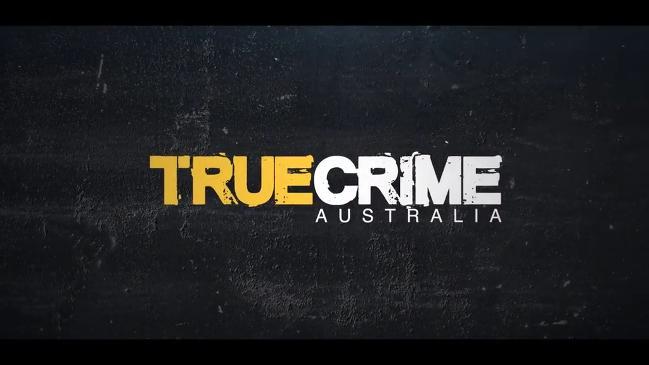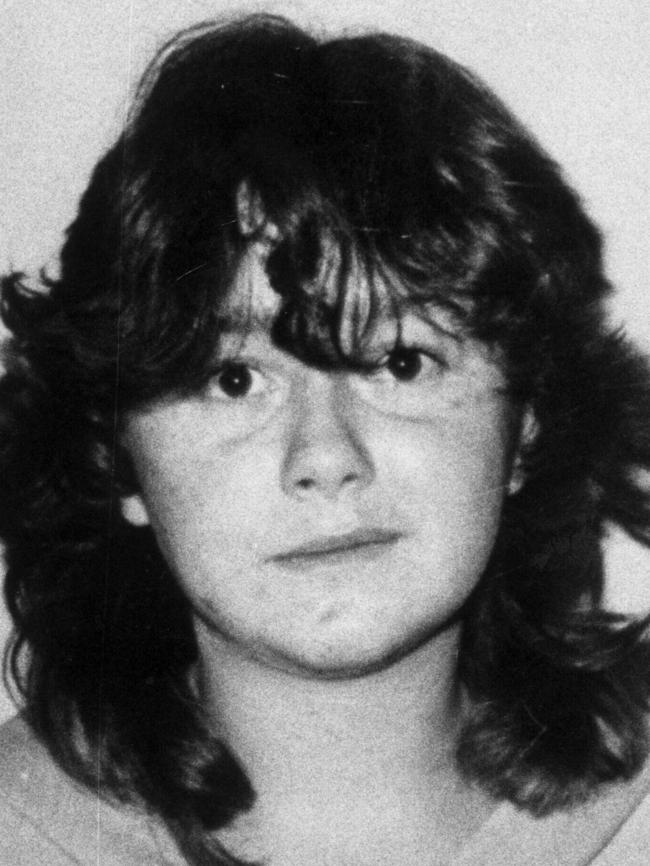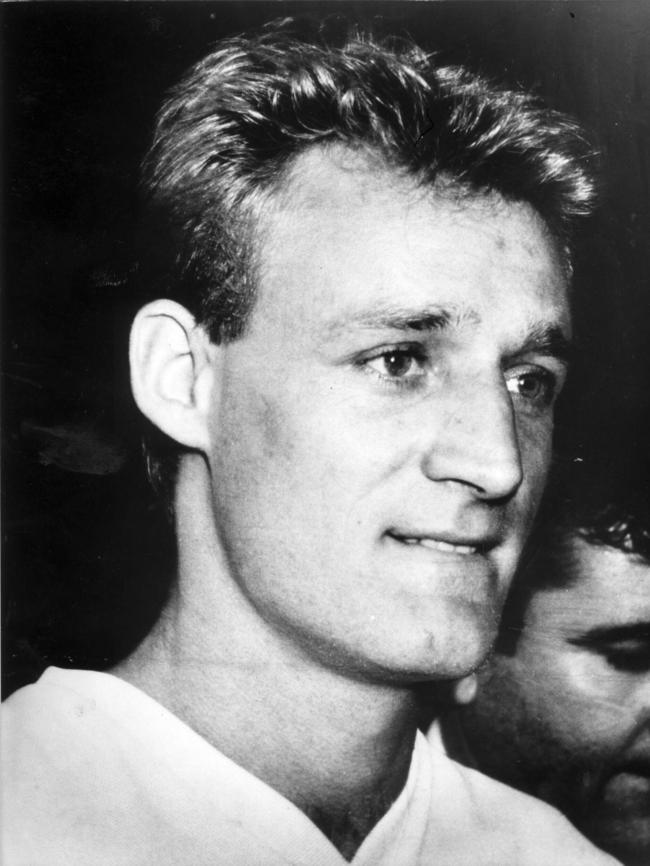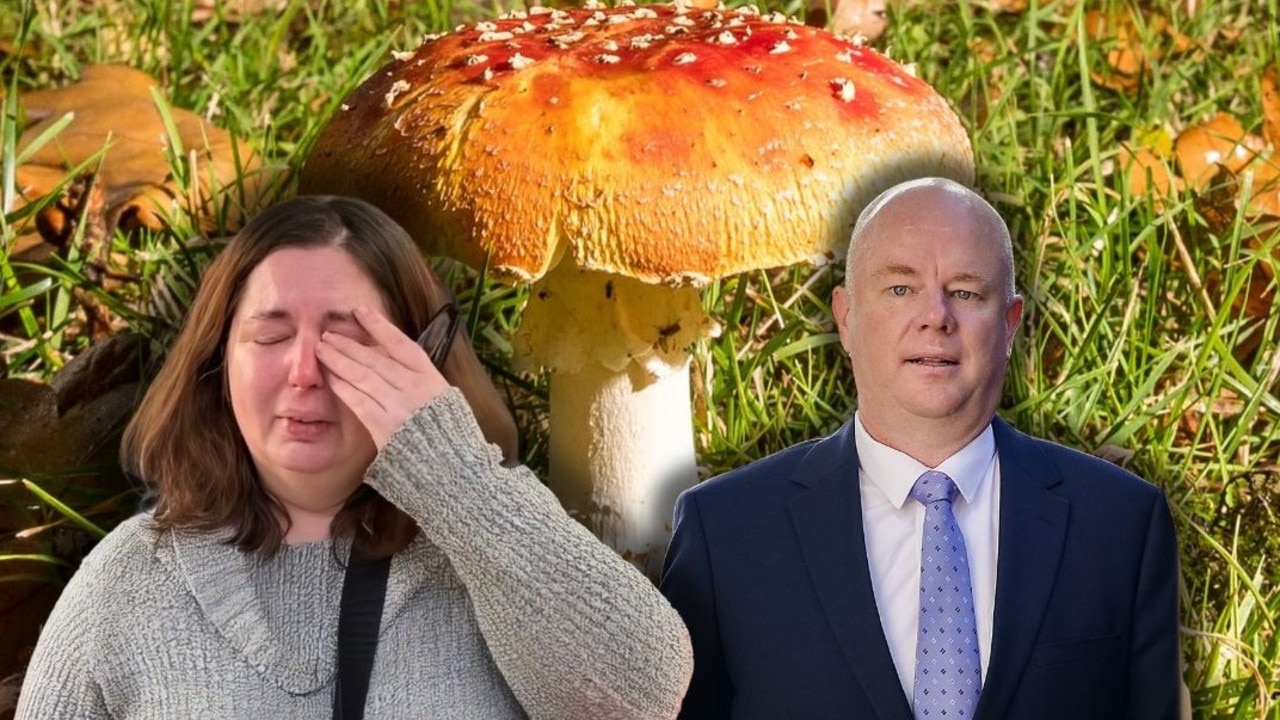Church-going housewife’s awful death was act of revenge
A BRISBANE mum was preparing a Bible reading in the kitchen of her home with her three year-old daughter beside her when a man burst in and set her on fire. Neighbours came running when they heard the screams but they were too late.

True Crime
Don't miss out on the headlines from True Crime. Followed categories will be added to My News.
THE killer knocked at the back door.
Sharon Joy Reynolds was preparing that week’s Bible reading in the kitchen of her Yeronga home with her three year-old daughter Amanda beside her.
Her husband Tony was at work as a restaurant cook and her five-year-old son Justin was asleep.
Neighbours came running when they heard the screams but they were too late. The church-going housewife had been burned alive.
Amanda was too young to give evidence against the man she saw grab her mother around the neck and pull downstairs, but her testimony was never needed. Police knew exactly who to look for.

THE FIRST TWO MURDERS
Sydney couple Sonja Grosvenor and Glen Wheeler had their differences but the happy pair got on together.
They would often have friends over at their Vulture St flat in East Brisbane and stay up late, so neighbours were not suspicious when they woke at 4am to an argument on July 4, 1987.
Half an hour later, a fire broke out in the apartment.
Downstairs neighbour Ross Kitchener kicked in the door thinking Ms Grosvenor was trapped inside, but fierce heat and smoke drove him out.


As morning broke that Saturday, another neighbour found a heavily bloodstained woman’s cream-coloured jumper and coat on the footpath outside her home.
A sawmill worker found the bodies a few hours later.
They were lying close together and face down in the mangroves at Norman Creek, just a short walk from the flat.
Mr Wheeler, 19, was dragged from the muddy rocks with wire cord still around his neck.
Ms Grosvenor, 20, had been strangled by hand.
Water in their lungs showed both had been alive when they were dumped and left to drown.
ON THE TRAIL OF A KILLER
Police suspected whoever strangled Ms Grosvenor and Mr Wheeler did not work alone.
“It would have been difficult and taken a while for one person to drag each body to the creek,” Sgt Bob Pease said.
“Then the killers had to go back to the house and set it alight.”
Mr Wheeler’s father Bob Wheeler was also baffled as to how his son was apparently set upon without fighting back.
“Glen could look after himself — he was a big boy and no pushover. He did training with weights too,” he said.
“I can only think he had a little too much whisky and got taken by surprise.”
The burnt-out apartment was a dead end. If the killer left any clues they were lost in the debris.
Police began investigating a possible drug link to the couple’s murders as both Ms Grosvenor and Mr Wheeler were known to police in Sydney.
Ms Grosvenor had been carrying out community service at a hostel after being convicted on a drug charge earlier that year.
She was also a born-again Christian who had given her life to God just days before her death.
Mr Wheeler, an apprentice screen printer, was put on a bond in Brisbane for smoking marijuana but his father said he never touched hard drugs.
A break in the case came when detectives discovered a man had been at the Vulture St apartment the night the couple were killed.
They traced his movements throughout Brisbane and came across Sharon Reynolds.
They gave her indemnity against prosecution and she agreed to give compelling evidence.
Three days after the bodies of Ms Grosvenor and Mr Wheeler were found, police charged Shane Cameron Clarke with murder.
WHO WAS SHANE CAMERON CLARKE?
Until mid-1987, Shane Cameron Clarke had been a family friend of the Reynolds.
He was regarded as almost an uncle.

It was Mrs Reynolds’ information that led police to charge Clarke and she was a key prosecution witness in his trial despite honestly believing he was innocent of the couple’s murder.
The blonde, square-jawed 25-year-old told police he met Mr Wheeler at the Stanley Hotel on Friday afternoon but later said they had first met the day before.
He was arrested after a number of inconsistencies in his story and refused to participate in a record of interview or give a specimen of his blood.
“I would not do this … kill two people,” Clarke told police.
“I know I was pretty stoned. I don’t truly know what happened at the flat after five hours. I don’t remember.”
Clarke’s de facto wife Judith Hughes allegedly told police she left Clarke at home with her two children about 6.45pm on Friday.
She came home from work about 4am to find the children alone.
Clarke arrived home about 4.30am.

Several neighbours also alleged they heard yells, screams and thumping against a wall in the Vulture St flat.
Later they allegedly saw two men and a woman on the footpath arguing.
“Sonja don’t be (expletive) crazy,” a neighbour heard one man say, to which the other man replied, “You are going to pay for this. You had better watch yourself.”
The woman was heard shouting “help me, help me”.
During the trial in Brisbane’s Supreme Court, Clarke said he arrived at the couple’s flat at 9.30pm on Friday to deliver some marijuana.
Clarke said he fled about 3am after a man named “Jimmy” confronted Ms Grosvenor and Mr Wheeler over a $6000 drug debt.
“He said: I know your name is Shane. This has got nothing to do with you, so get the (expletive) out of here,” Clarke told the court.
The trial also heard allegations that detectives had stood around Clarke verbalising him and spat at him.
After deliberating for nearly nine hours, the jury acquitted Clarke of both murders on March 30, 1988.
THE HATRED BURNS
Just hours after becoming a free man, Clarke turned up at the Reynolds’ home on a bicycle and smelling of alcohol.
He thanked Mrs Reynolds for giving evidence against him and told her he held no grudges.
A week later, Clarke showed up again riding a tandem bicycle but was surprised to see Mrs Reynolds’ husband Tony at home on a rare day off.
Clarke began doing karate, using Mr Reynolds as a target, but soon got angry and left.

THE DAY OF THE KILLING
Clarke knocked at the back door.
Prosecutors would later argue Mrs Reynolds answered and gave him a foil of marijuana before he attacked.
Clarke forced Mrs Reynolds down the stairs and under the house.
She fought back. A neighbour heard one long scream and Clarke had scratches on his face.
Mrs Reynolds was choked into unconsciousness and dragged backwards to a spot where she was raped.
Clarke then poured turpentine over her and set her alight while she was still breathing.
The 24-year-old’s badly burned body was found at 9.45pm by neighbours who heard the screams.
Clarke was arrested — 13 days after his acquittal — at his de facto wife Judith Hughes’ Park Rd home in Yeronga the next morning.
Traces of mineral turpentine found in a four-litre can and a bottle at the Reynolds’ house were consistent with traces of a compound found on men’s shoes taken from Ms Hughes’ home, which was just 400m from the crime scene.

THE TRIAL
Judith Hughes knew something had happened that night.
Her initial statement did not match up with Clarke’s.
He claimed to have stayed home then gone to a laundromat about 9.50pm, while she said he went out alone for about 40 minutes.
She told his Supreme Court trial Clarke had threatened to incriminate her in the rape and murder unless she changed the statements she had given to police.
Four days after Mrs Reynolds’ death, Ms Hughes visited Clarke in jail wearing a hidden police tape recorder.
“You’re going in, I’m saying you were with me,” Clarke told her.
Ms Hughes told the court on the night of the murder, Clarke came home about 9.40pm with scratches on his face, nose and chin.
His coat and trousers were covered in dark red smears and stains.
Clarke’s first words were: “She won’t talk anymore. I had to do it. Who knows how many people she would have put inside.”
“It wasn’t very nice. Have you ever seen what happens when you pour turps over someone?”
Clarke indicated at the scratch on his face and said “that’s from Sharon’s fingernails”, Ms Hughes told the court.
Clarke then ordered Ms Hughes to “wash the blood out of the clothes” and told her she would have to hide him for a week so no one would see the scratches.
“I’ve got the devil in me. My number is 666,” he said.
Clarke’s version of events was slammed as preposterous by the prosecutor.
His aunt Shirley Dawn Clarke told the trial she visited Clarke in jail and that he had cried as he claimed two men, who had been following him since he was acquitted, were already under Mrs Reynolds’ house when he arrived.
Clarke had said the men feared police would reopen the investigation into Ms Grosvenor and Mr Wheeler’s murders so they had to make it look like he killed Mrs Reynolds.
He claimed he was forced at gunpoint to tip turpentine over Mrs Reynolds and when he turned around she was on fire.
Ms Hughes denied Clarke told her he had been “set up for another murder” and that it was the “same men as last time”.
Defence lawyer Walter Sofronoff told the jury it was natural for Clarke to wash blood from his suit and deny knowledge of the death at first because he had been present at the violent death of a Crown witness at his previous trial.
Mr Sofronoff said Clarke was full of the horror of what he had seen and his actions were those of a frightened man, not a callous, aggressive man.
Clarke’s trial took an unexpected turn after he made a statement to police implicating a former Fitzgerald inquiry witness in all three murders.
Clarke claimed Trevor Vellacott, a former associate of vice figure Hector Hapeta, was the man “Jimmy” who had turned up at Ms Grosvenor and Mr Wheeler’s flat on July 4, 1987..
He told police Mr Vellacott and another unknown man murdered Mrs Reynolds
Clarke also alleged Mr Vellacott had called on him twice after he was acquitted, saying he had been identified by the nickname and offered him money and a job to stay quiet.
The court heard Mr Vellacott had been at a Sydney boarding house at the time of the double murder.
When Mr Vellacott said he had never heard the nickname, Clarke stood up and yelled from the dock, “bullshit, you’re a (expletive) dog”.
Clarke also shouted “for God’s sake, why don’t you tell them the (expletive) truth” when Mr Vellacott denied any connection with the murders.
As the jury retired to deliberate, Clarke passed a three-page letter to a young blonde woman in the public gallery pledging his love to her.
The letter said “ ... It does not mean that because they have charged me with murder that I’m a killer … 13, 14 and 15-year-olds have been accused of far worse crimes.”
Clarke told the woman she was beautiful and that he believed he was in love with her.
The woman, who was stopped by police outside court to hand over the letter, said she did not know Clarke but he had been winking at her during the trial.
She did not return for the verdict.

The jury took eight hours to find that Clarke was what the Crown had claimed — an outrageous liar.
In sentencing him to life in prison, Justice Paul de Jersey described Clarke as extremely dangerous.
“If you were ever released from jail you will constitute a grave threat to the public and those who gave evidence against you”.
The judge said he wanted his comments to be given great weight if Clarke ever sought parole.
It was also revealed Clarke had a criminal history “as long as your arm” and had been cleared of three rapes.
Clarke had been convicted for unlawfully wounding a 29-year-old woman at a birthday party in September 1982.
The woman had been drinking and smoking cannabis and remembered waking to find Clarke choking her.
Clarke fled when a witness came to help, potentially saving the woman’s life.
Homicide squad detectives said Reynolds was the latest victim in a long line of women and girls who had fallen for Clarke.
One detective said: “Clarke got his kicks by throttling women as he made love to them. His speciality was the double-handed throttle. It was his trademark”.
Outside court, Tony Reynolds said at long last, justice had been served.
“At long last. I can get on with my life again. All I want now is to get home and see my young kids,” he said.
HORROR HISTORY
Sharon Reynolds was the first Crown witness to be slain after a trial.
Shane Cameron Clarke also made Queensland history alongside his sister as the state’s first brother and sister to be jailed for separate slaying.
Cheryl-Anne Clarke, 26, was jailed for four years in September 1988 for the stabbing death of Owen Pitman, 32, whom she claimed had demanded sex at a house in Woolloongabba.
After Clarke was jailed for killing Mrs Reynolds, a juror from the Grosvenor Wheeler murder trial came forward claiming Clarke was acquitted because of the Whisky Au Go Go killer James Finch’s allegations of police verballing.
Clarke had claimed police had spat at him and forced him to make certain statements.
“The seeds of doubt (about police) were already strong in our minds because of the Finch and Fitzgerald Inquiry publicity,” the juror told The Courier-Mail in 1989.
“The saddest part was we all believed Clarke had lied — yet we let him go because the law states if there is doubt the defendant must be given the benefit of that doubt.
“The night I heard on the radio he had been arrested for killing the main witness in the trial, I cried for hours.”
The juror said the lack of motive had also been taken into account when acquitting Clarke.
Clarke was assigned to a maximum-security “cage” in Boggo Road Gaol — a cell and small exercise area surrounded by a steel cage.
Queensland Police wrote to the Corrective Services Minister appealing for Clarke to be held in maximum-security as they believed he would try to escape to kill those who gave evidence against him at trial.
On July 16, 1989, Clarke was one of six prisoners charged with escaping from the prison.
A grappling hook and 16m of rope made from bed sheets was found hidden in a laneway between the jail wall and yard.
A corner of the wire around the exercise cage had also been forced open.
It was alleged a mattress and bedding were set alight in a separate part of the prison as a diversion.
All six prisoners were later cleared of the charges as none of them were “caught in the act” of escaping.
On September 26, 1989, the Court of Criminal Appeals unanimously reject Clarke’s appeal against his conviction and life sentence for Mrs Reynolds’ murder.
Originally published as Church-going housewife’s awful death was act of revenge


